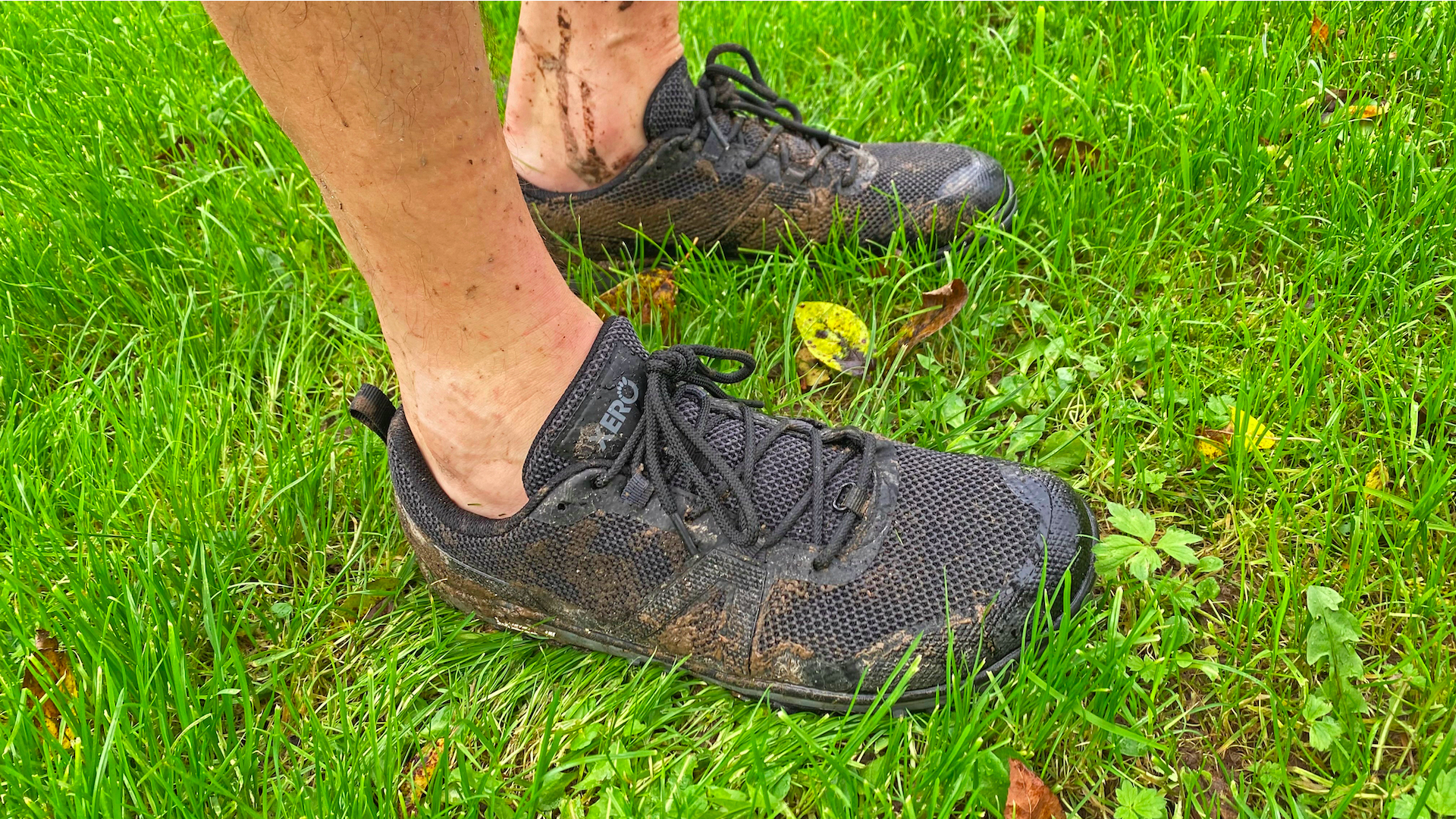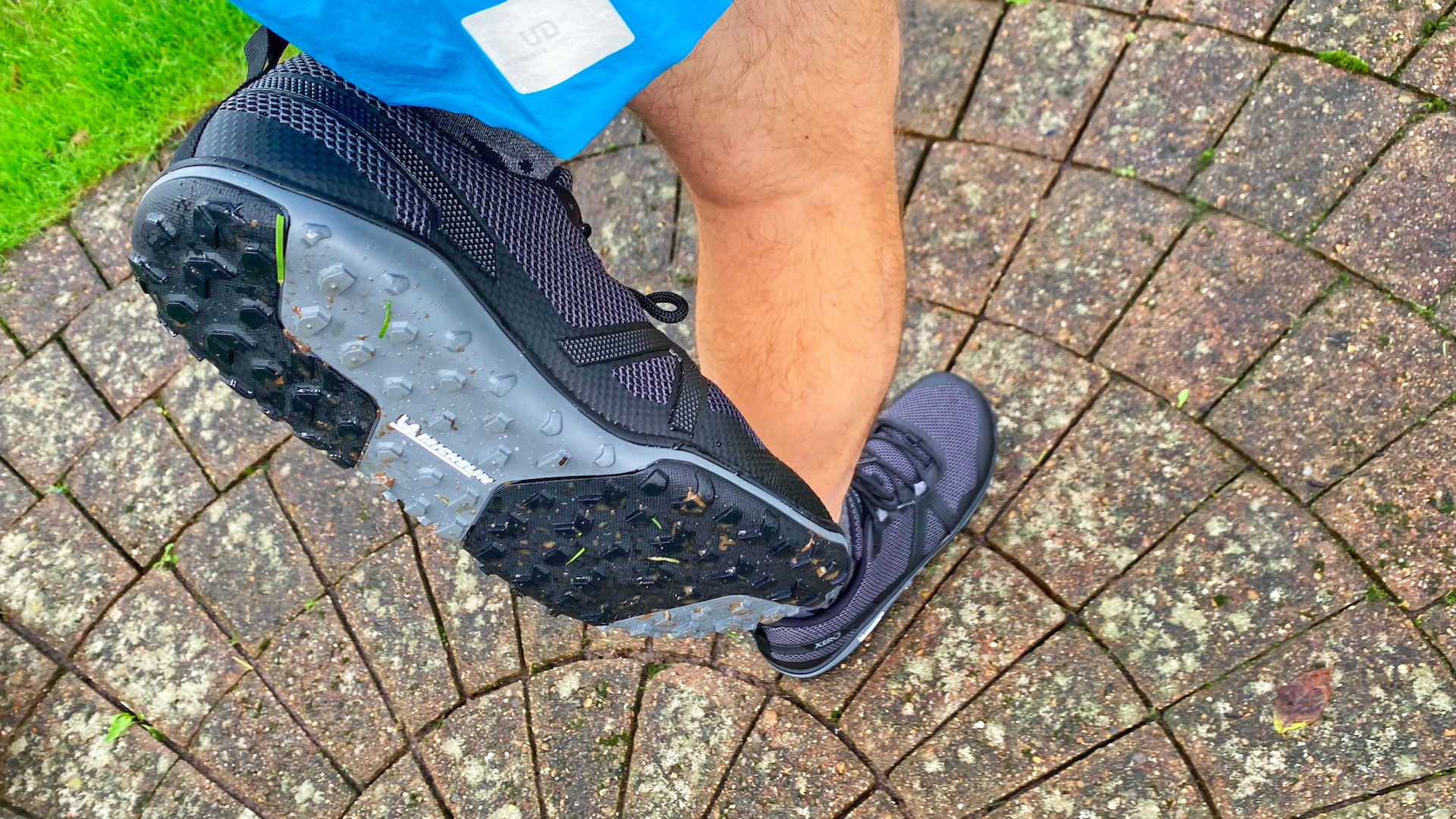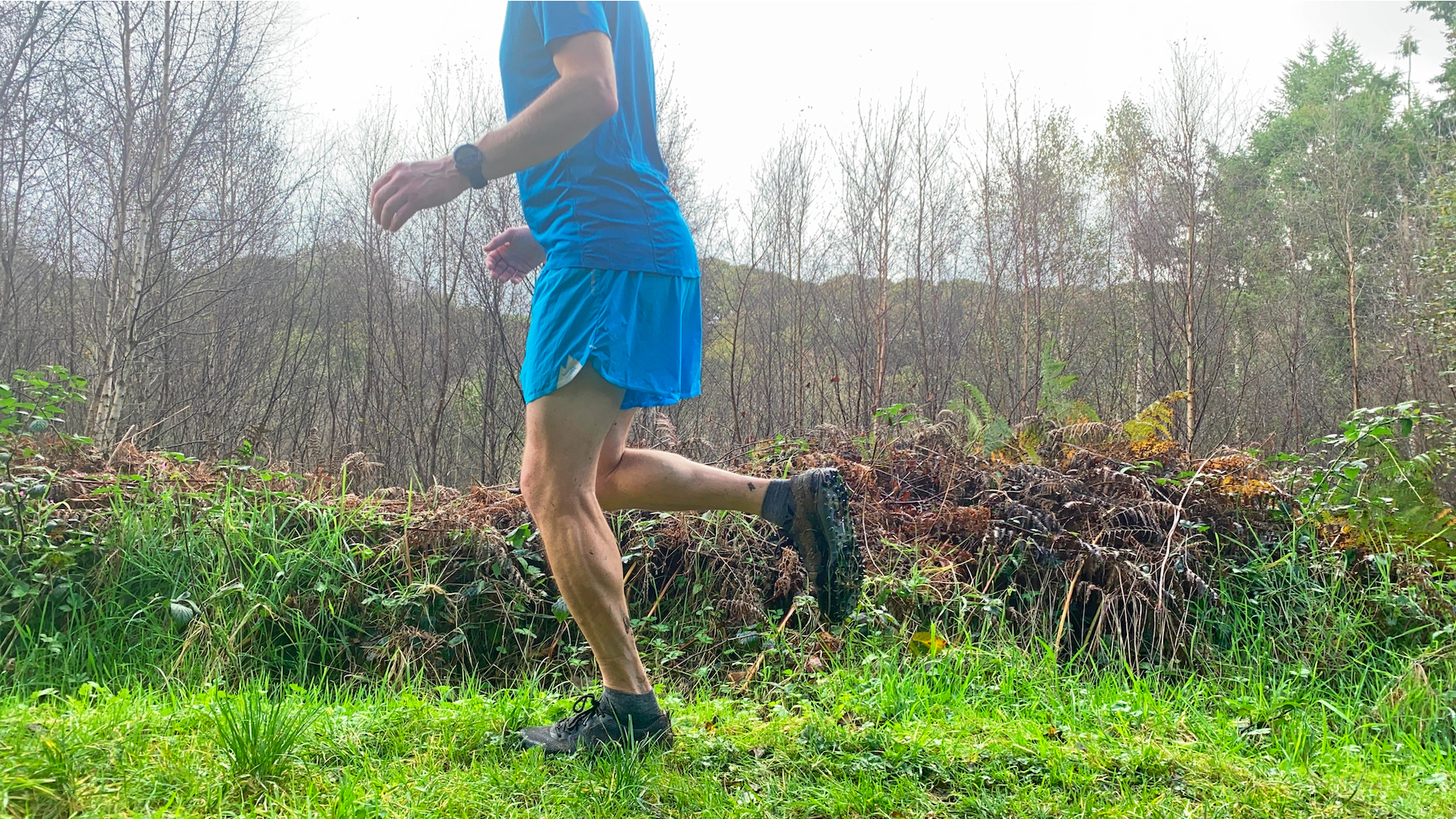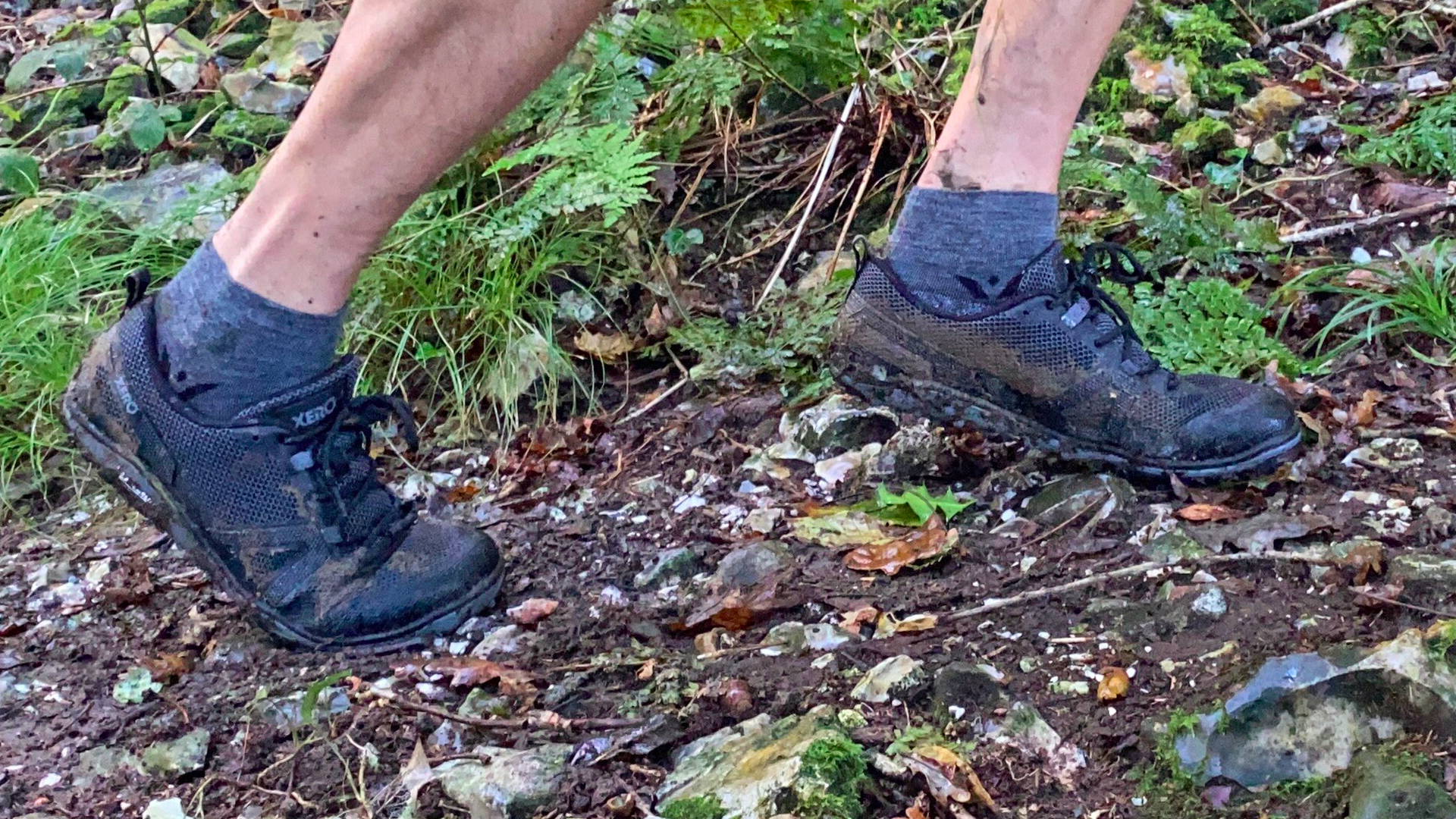Advnture Verdict
Exceptionally comfortable and technically capable, the Xero Scramblers are a minimalist, zero-drop, barefoot running shoe that will take you across any kind of terrain. With a good, grippy outsole created in collaboration with tire specialists Michelin, a lightweight mesh upper and a soft-feel collar – plus the option to include or remove a subtle layer of insole-based cushioning – these shoes are versatile, high performing and long lasting.
Pros
- +
Wide toe box
- +
Ultra light
- +
Lots of trail feel
- +
Soft fabric collar
- +
Removable insole
Cons
- -
Tend to slip on smooth, wet surfaces
- -
Chunky laces
- -
Pricey
You can trust Advnture
Xero Scrambler Low: first impressions
A brand new offering from a barefoot-specialist brand, the Xero Scrambler Low has charged onto the market backed by quite a bit of hype, with Xero founder Steven Sashen proclaiming it to be the, “lightest, most breathable, most comfortable technical running shoe ever made”. Over the last month I’ve been putting the Xero Srambler Lows to the test, to see whether they live up to those boasts, and whether they deserve to be listed alongside best barefoot shoes out there.
• List price: $149.99 (US) / £126.99 (UK)
• Weight (per shoe, men’s UK11): 264g / 9.3oz
• Drop: 0mm
• Colors: Legion Blue / Black
• Compatibility: Mixed terrain running, hiking and scrambling
What primarily differentiates the Scrambler from the other barefoot shoes in the Xero range is the outsole, which is made by Michelin and designed for running (or hiking, or indeed scrambling, but this feels a lot like a running shoe) on mixed terrain. As such, the lugs are less aggressive than the trail-gripping teeth that feature on the brand’s most popular models, such as the Mesa Trail. For my money this is a good thing, since – unless you’re lucky enough to live right by a trailhead or you’re willing to drive to an access point (which always seems a shame) – most runs begin on, or at least take in, some sealed surfaces before the filthy off-road fun begins.
The tread employed by Michelin on the Scramblers is apparently inspired by those used on its mountain bike tires, and to help keep the shoe light and flexible while still making it tough. The manufacturers have also used fiberlite technology, which involves embedding a layer of textile into the outsole. The main chassis of the shoe is made from a very lightweight breathable mesh.
The outsole wraps around the side of the shoe somewhat, which gives the impression from the exterior that there’s a midsole lurking somewhere in the design – but Sashen says this is an illusion and the Scrambler is a proper zero shoe. However, there is 10mm stack, plus a foam insole that can be left in to supply some degree of cushioning, or removed to improve the barefoot feel and trail feedback.
The Scramblers are also available in a mid-height version, if you prefer a bit more coverage and support.
Xero Scrambler Low: on the trails

We’ve tested a number of Xero barefoot shoes now, and while we liked the Mesa Trail, which is the most popular shoe in the range, the more recent waterproof iteration of this classic hoof left me distinctly less impressed.
One reason the Xero Mesa Trail WP didn’t work for me was that I couldn’t run in them with no socks on without sections of my skin getting rubbed off. So it was with some trepidation that I first hit the trails sans socks in the Scramblers. Truth be known, I stuffed a pair of trail running socks in my shorts before heading out, just in case (although that sentence sounds very suspicious now that I read it back… it was an entirely practical consideration I assure you).
All the latest inspiration, tips and guides to help you plan your next Advnture!

And happily, I can report that the collar of the Scrambler is made from much softer material, and it doesn’t rub at all, even if you choose to lose your socks and go for a proper barefoot approach. This is important to me, because I like to let my toes really spread out when I’m barefoot running, and to connect with the trail in a tactile way as much as possible, and socks inhibit my ability to do that.
This soft-feel collar feature alone meant my relationship with the Xero Scrambler got off on just the right foot. And I have to say that, while I am inherently skeptical of the kind of claims Sashen has been coming out with, I found these versatile shoes to be very comfortable, extremely breathable and highly capable across a wide range of terrain.

Like other Xero shoes, the toe box is lovely and wide (so your pinkies can spread) and there’s a protective toecap on the outside to guard them against bumps. The laces are somewhat chunky for my liking, but despite only passing through four pairs of eyelets as standard, the midfoot strap setup does supply decent hold and there is an extra pair of optional lace holes you can use in really boggy scenarios to avoid losing a shoe (see also: What are the extra lace holes on running shoes for?).
The mesh uppers are really breathable, and water drains out of them very quickly, which I far preferable to having a waterproof hoof for running, in my opinion. There’s also a hook on the front of the laces for fixing gaiters to if you’re running or hiking in more challenging conditions.

The lugs are large enough to supply good grip on slippery tracks, but they don’t push through the bottom of the shoe uncomfortably when you’re running on hard-packed and sealed surfaces. The chevron-shaped studs are positioned in a multidirectional layout to offer good braking control during descents as well as reliable traction when you’re powering uphill. The rubber is quite hard, which means they are prone to slipping on smooth, wet surfaces such as damp logs and paving stones. The rigidity of the tread does mean, however, that the lugs will likely last for a long time (in fact, each Xero Scrambler Low comes with a 5,000m sole warranty).


Author of Caving, Canyoning, Coasteering…, a recently released book about all kinds of outdoor adventures around Britain, Pat has spent 20 years pursuing stories involving boots, bikes, boats, beers and bruises. En route he’s canoed Canada’s Yukon River, climbed Mont Blanc and Kilimanjaro, skied and mountain biked through the Norwegian Alps, run an ultra across the roof of Mauritius, and set short-lived records for trail-running Australia’s highest peaks and New Zealand’s Great Walks. He’s authored walking guides to Devon and Dorset, and once wrote a whole book about Toilets for Lonely Planet. Follow Pat’s escapades on Strava here and Instagram here.

